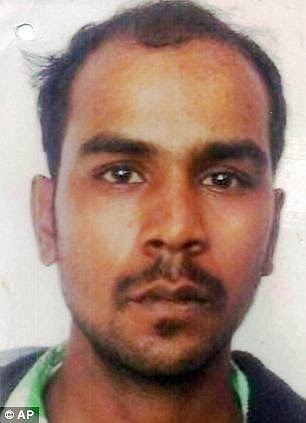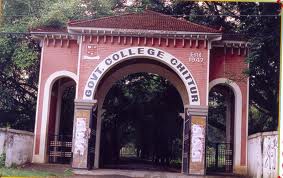Happy Navratri wishes
About Navratri, a legend has it that Lord Rama fasted and prayed for 9 days to seek Goddess' blessings to kill Ravana. He kills him on the 10th day, and this day is called Dusshera, the day when the ten-headed Ravana was killed.
During the period of 9 days of Navratri, 9 forms of Durga, called nav-Durga, are worshipped in the following order:
- Shailaputri: She is the primal energy of the trident Brahma, Vishnu, and Shiva, and was born as a daughter (Putri) to Himalayas (Shaila - mountains)
- Bhrahmacharini: This form represents penance and austerity leading to blissfulness and moksha
- Chandraghanta: Represented as a 10-armed mother riding a lion, she adores a bell-shaped (ghanta) moon (Chandra), and is a slayer of evil forces.
- Kushmanda: Literally meaning "little warmth cosmic egg", she is the creator of the universe
- Skandamata: She is the mother of Skanda, or Kartikeya, the chief warrior of Gods.
- Katyayani: As the daughter of sage Katyayan, she is a fierce form of Durga.
- Kaalratri: As the death of Kaal (time), she showcases the other side of life - death. She is the most terrible and ruthless form of Durga.
- Maha Gauri: She represents calmness and grants wisdom to her devotees.
- Siddhidatri: The fulfiller of all the wishes and giver of boons.
Navratri is part of a pan-Asian, 9-day autumn festival that goes by different names. The Chinese-related peoples of Asia call it the Nine Emperor God's Festival and the Indian-related people call it the Navaratri (Festival of Nine Nights). It is celebrated in 100's different forms.
In India, the festival starts on the new moon day falling between September 15 & October 15. In East Asia, it starts on the 9th day of the 9th lunar month [around the same time period].
In India, the primary theme is the celebration of truth over evil. It is celebrated as Garbha-Dandiya, Ramlila, Golu, and Durga Pooja in various parts of the country (explained in detail below). It is probably the most important Indian festival you have ever heard of. Essentially, it is an art festival and the celebration of good over evil.
The above video is of Dandiya dance with skating on legs. very nice dance by the couple
Women take a central stage in this festival and it is a celebration of feminine qualities such as dance, music, and decoration. It is celebrated over 10 days in September-October. It is also a reminder of the historic status of women in India and how they held a lot more power in ancient India.
If you are interested in the arts, this is one of the best times to visit India. It is just after the monsoons and the weather is not too hot, nor cold in most parts of the country.
In Tamilnadu, it is called Golu. We buy 100s of idols and try to create various settings that portray our culture and heritage. These idols & dolls are arranged in wood/steel stair specially built for this purpose. It is like a mini-museum at home. Some of these settings will talk about mythology and others about the lives of ancient times. Few others get more creative and set more modern scenes (such as a Cricket field of contemporary Indian life).
Below the video watch and listen to the wonderful group Devi Stuti by devotee children. A MUST-WATCH PLEASE.
Below the video watch and listen to the wonderful group Devi Stuti by devotee children. A MUST-WATCH PLEASE.
On the 9th day, we stop all work and decorate the stuff that is essential for our professions. These are then put to use on the 10th and final day. Little kids begin their kindergarten at the end of this festival and in most south Indian homes you would find the kids from neighbors' homes singing and getting a gift (a sort of an elaborate "Trick or treat" during American Halloween)
In the east, this festival is celebrated as "Durga Pooja" where the goddess Durga wins over a demon. It celebrates both the victory of truth and the greatness of feminism. If you end up in the eastern city of Kolkata at this time, you will see swarms of Durga idols dotting all over the city and people of all walks celebrating in the street. It is a happy time.
In Western India, the festival is celebrated as the dance festival - Garba. This is absolutely fun and you will find people dancing in the streets with two decorated sticks. Many universities in the US organize this event in October and if you are around any major university, do take your time to attend this event.
The north celebrates it as a victory of King Rama over the demon Ravana in the festivalRamlila. King Rama is celebrated in the great Indian epic of Ramayana and is one of the most revered/respected gods in India. Rama is known for truth & honesty and his life is believed to be worthy of emulation of commoners. At the end of the 10-day battle, huge effigies of the demon Ravana are burned in each neighborhood.
Navarathri is one of the longest and most diverse festivals of India. It celebrates arts like no other Indian festival. It is the most colorful Indian festival and super fun. Sadly, the festival is losing some of its ground in India as our generation doesn't fully grasp the story behind this awesome festival.
Nepali Hindus also celebrate this festival in a big way. At this festival, the emphasis on family ties and put the red-colored kumkum on each other's forehead.
Sudesh DJV writes on contemporary subjects in the form of Articles and poems which are in the interest of the Nation in particular and for Mankind in general.















.jpg)




Comments